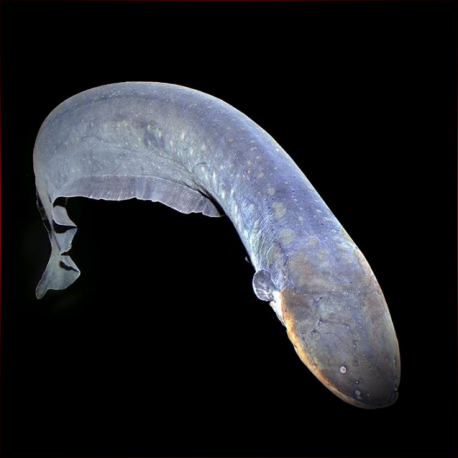More info
Datasheet
| Minimum Tank Size | 2040 litres / 538.91 US gallons |
| Maximum Size | 250.0cm / 98.43inches |
| Temperature | 23°C / 73.40°F - 28°C / 82.40°F |
| Hardness | 1-12ºdH |
| pH | 5.5-7.0 |
General Description
The Electric Eel, scientifically known as Electrophorus Electricus, is an extraordinary species renowned for its unique adaptations and abilities. This fish, belonging to the Gymnotidae family, can grow up to an impressive size of 250.0cm. Its body primarily houses vital organs dedicated to producing electricity, with specialized electrocytes enabling this function. Additionally, the fish possesses three electricity-producing organs, each serving distinct purposes in navigation, communication, prey stunning, and defense.
Aquarium Setup
Maintaining an Electric Eel in captivity necessitates specific conditions. With a recommended minimum tank size of 2040 litres, the setup should prioritize minimal water movement. While the fish is not particular about decor, providing hiding spots like roots or rocks is advisable. Dim lighting, a sandy or muddy substrate, and a secured tank cover are essential. Ensuring a gap for the eel to access atmospheric air is crucial due to its obligate air-breathing nature. Furthermore, a robust filtration system is indispensable to manage the waste output of this species.
Behaviour
Best housed singularly due to its predatory nature, the Electric Eel is not suited for tankmates. Even in groups of three or more individuals, a significantly large tank would be required, making communal setups uncommon among hobbyists. Despite its reputation, the eel tends to exhibit aggression primarily when provoked, relying on its strong electrical discharges for hunting and protection. When properly acclimated, captive specimens can display docile behavior and may even accept hand feeding.
Feeding and Diet
As a carnivorous species, the Electric Eel can easily adapt to consuming dead food in captivity. Offering a diet of large earthworms, whitebait, trout, prawns, and mussels is recommended. In the wild, these eels feed on a variety of prey ranging from fish to amphibians. Juveniles, in particular, readily accept smaller food items like prawns and mussels before transitioning to larger fare.
Reproduction & Dimorphism
Reproduction of the Electric Eel remains elusive in captivity, with anecdotal reports suggesting male eels construct nests for egg deposition using their saliva. Details regarding sexual dimorphism in this species are currently unknown, warranting further research to elucidate potential differences between male and female eels.
Habitat and Distribution
Electric Eels are native to the slow-moving, oxygen-deprived waters of South America, specifically found in regions spanning Venezuela, Guyana, Suriname, French Guiana, Peru, and Brazil. These eels prefer habitats like weedy creeks, swamps, and tributaries characterized by stagnant water conditions conducive to their survival.

